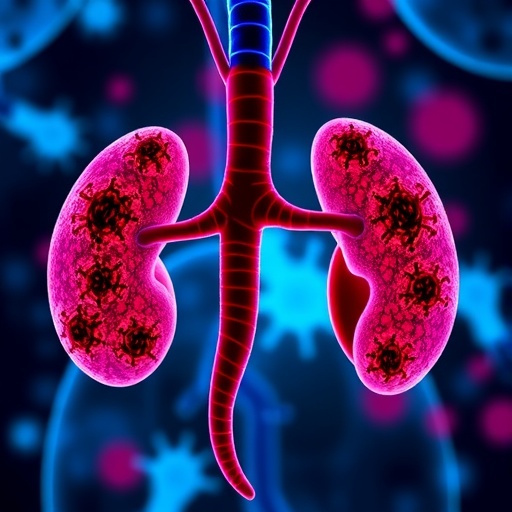High-altitude environments present significant challenges to the human body, primarily due to the reduced oxygen levels that can lead to Acute Mountain Sickness (AMS), High Altitude Cerebral Edema (HACE), and High Altitude Pulmonary Edema (HAPE). These conditions pose serious health risks, particularly for individuals ascending rapidly to elevations above 2,500 meters. Understanding the physiological mechanisms that lead to these altitude-related ailments has become increasingly crucial for high-altitude expeditions, military operations, and even tourism. Recent discussions in the medical community have focused on the use of dexamethasone, a corticosteroid, in preventing and managing these potential health issues.
Dexamethasone is a synthetic glucocorticoid that has demonstrated a wide range of anti-inflammatory and immunosuppressive properties. Its potential application in high-altitude medicine is particularly intriguing. The mechanism by which dexamethasone impacts the body at altitude is multifaceted. Research indicates that it has the ability to reduce cerebrospinal fluid production, consequently lowering intracranial pressure, which is especially beneficial in preventing HACE, a condition characterized by life-threatening brain swelling. Furthermore, dexamethasone can enhance the regulation of vascular permeability, thereby tackling pulmonary edema, which is paramount in the management of HAPE.
Numerous studies have suggested that dexamethasone may also mitigate the effects of AMS by altering the beginnings of this condition, which can present as headaches, nausea, and even fatigue shortly after arriving at high altitude. The appeal of dexamethasone rises from its potential for proactive intervention; rather than merely treating symptoms once they appear, this corticosteroid can be administered prior to ascent. Utilizing a preventive strategy could fundamentally alter how climbers and military personnel prepare for high-altitude conditions.
The military implications of this research are particularly profound. Troops often operate in rugged, high-altitude terrains where traditional acclimatization methods may not be feasible due to time constraints. The ability to administer a drug that could prevent the onset of altitude sickness directly impacts operational effectiveness and troop readiness. Additionally, even brief excursions to altitudes exceeding recommended limits can lead to cognitive impairment and physical debilitation, vastly reducing performance levels. As a result, the implementation of dexamethasone in high-altitude training protocols could lead to enhanced soldier resilience and efficacy during missions.
However, it is essential to acknowledge the potential drawbacks and limitations associated with the use of dexamethasone. The drug may exert side effects that could counteract its beneficial impact, such as causing muscle weakness, hypertension, and even altering glucose metabolism. Such side effects necessitate a careful assessment of risk versus benefit, especially in high-stakes environments like combat zones or during challenging expeditions.
The narrative review conducted by Burtscher et al. systematically consolidates current evidence surrounding the efficacy of dexamethasone in altitude sickness prevention. Their comprehensive analysis incorporates various avenues of research, from physiological studies to clinical trials, offering a balanced perspective on the drug’s mitigation of altitude sickness and performance impairment post-ascent. By acknowledging both supporting data and contested findings, the authors provide a holistic view that sparks further inquiry into optimized protocols for altitude acclimatization and intervention.
As climbers and military operatives continue to push the limits of altitude, understanding the nuances of dexamethasone’s administration becomes increasingly vital. Many athletes and adventurers are already interested in incorporating medications to enhance their endurance and decrease recovery time. However, the ethical implications of using performance-enhancing substances require careful consideration. Open dialogue within the scientific community could guide best practices, ensuring that the use of dexamethasone aligns with safety, legality, and ethical standards.
In the broader context of altitude research, the investigation into dexamethasone serves as a springboard for additional studies that could explore other therapeutic avenues. Potential explorations include the role of other corticosteroids, altitude acclimatization protocols emphasizing nutrition and hydration, and the physiological adaptations that promote resilience to high altitude. Indeed, high-altitude medicine is an evolving field that requires a multidisciplinary approach, leveraging insights from physiology, pharmacology, and even psychology.
In conclusion, the narrative review by Burtscher and colleagues paves the way for a deeper understanding of dexamethasone’s role in preventative strategies against severe altitude sickness. As arguments surrounding its efficacy and safety continue to unfold, the clinical community remains engaged in this critical conversation. Future studies will undoubtedly illuminate the complexities of dexamethasone therapy and high-altitude health, ultimately informing health protocols that prioritize safety and performance.
The ongoing dialogue about dexamethasone’s role in altitude sickness prevention is emblematic of the broader scientific endeavor to bridge the gap between empirical research and real-world application. As interest in high-altitude endeavors grows, both in the realms of adventure and military operations, further investigation may lead to more sophisticated and nuanced strategies for enhancing human performance and safety at elevation. The imperative for such research is clear: while conquering high altitudes, ensuring human well-being remains paramount.
The integration of dexamethasone into altitude acclimatization protocols not only represents a significant advancement in sports medicine but also highlights the continuing evolution of our understanding of human physiology. This fusion of science and practical application illustrates commitment to maintaining health and performance in challenging conditions.
As methods to counteract altitude sickness continue to be explored, dexamethasone stands out as a beacon of potential. It encapsulates the spirit of innovation in the face of adversity, proving that even as humanity seeks to conquer the heights of nature, foundational health must remain a core focus. Continual investigation, dialogue, and interdisciplinary collaboration are essential as we navigate this frontier of altitude health science.
Subject of Research: Dexamethasone for prevention of altitude-related ailments
Article Title: Dexamethasone for prevention of AMS, HACE, and HAPE and for limiting impairment of performance after rapid ascent to high altitude: a narrative review
Article References: Burtscher, J., Gatterer, H., Beidleman, B.A. et al. Dexamethasone for prevention of AMS, HACE, and HAPE and for limiting impairment of performance after rapid ascent to high altitude: a narrative review. Military Med Res 12, 48 (2025). https://doi.org/10.1186/s40779-025-00634-y
Image Credits: AI Generated
DOI: https://doi.org/10.1186/s40779-025-00634-y
Keywords: Dexamethasone, Acute Mountain Sickness, High Altitude Cerebral Edema, High Altitude Pulmonary Edema, performance at altitude, military medicine, altitude acclimatization.
Tags: altitude acclimatization strategiesanti-inflammatory medications for altitude sicknesscorticosteroids for high altitudedexamethasone altitude sickness managementhigh altitude cerebral edema treatmenthigh altitude pulmonary edema solutionsmilitary high-altitude operations healthphysiological effects of altitude sicknesspreventing acute mountain sicknessreducing intracranial pressure at altitudesynthetic glucocorticoids in medicinetourism at high elevations health risks





